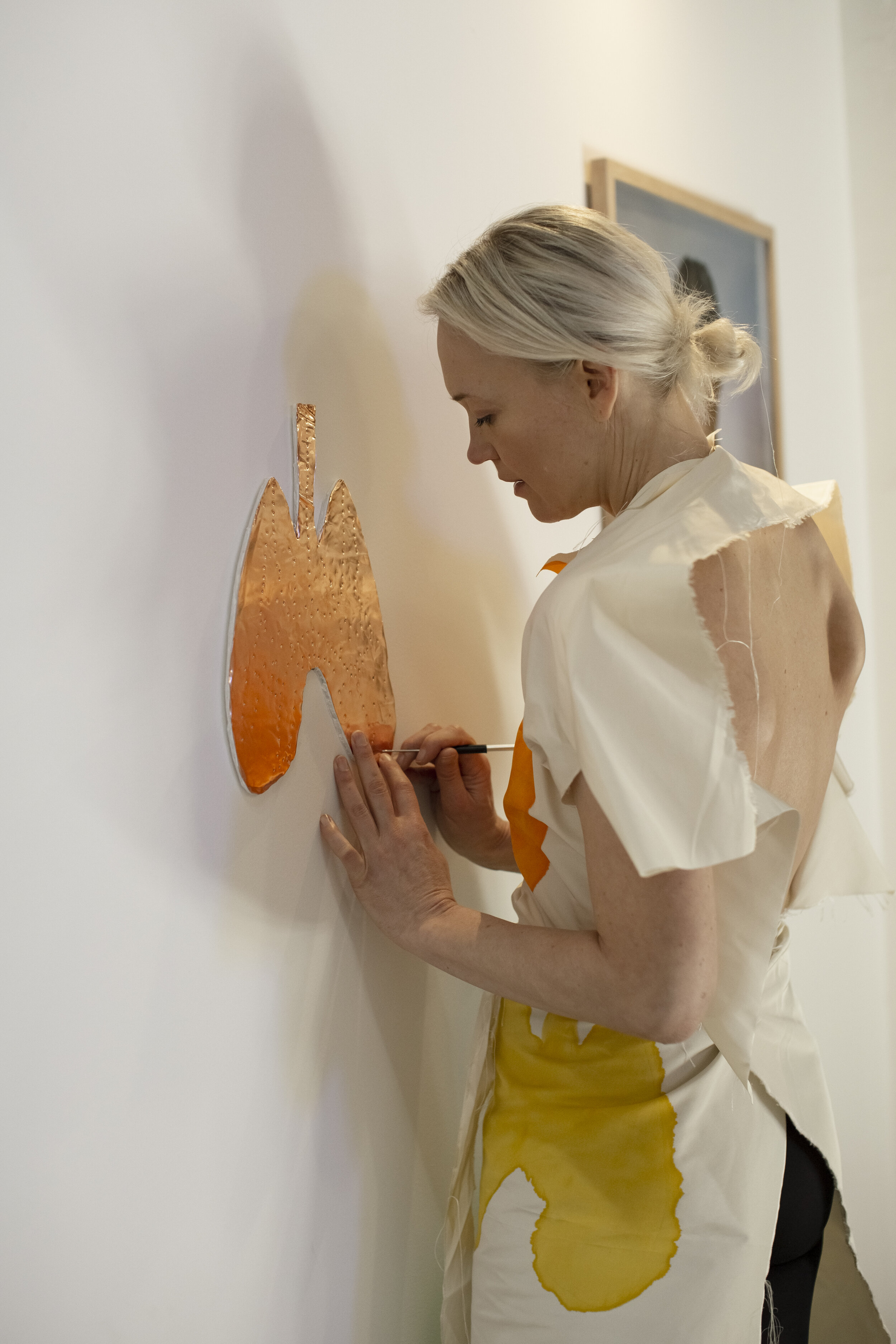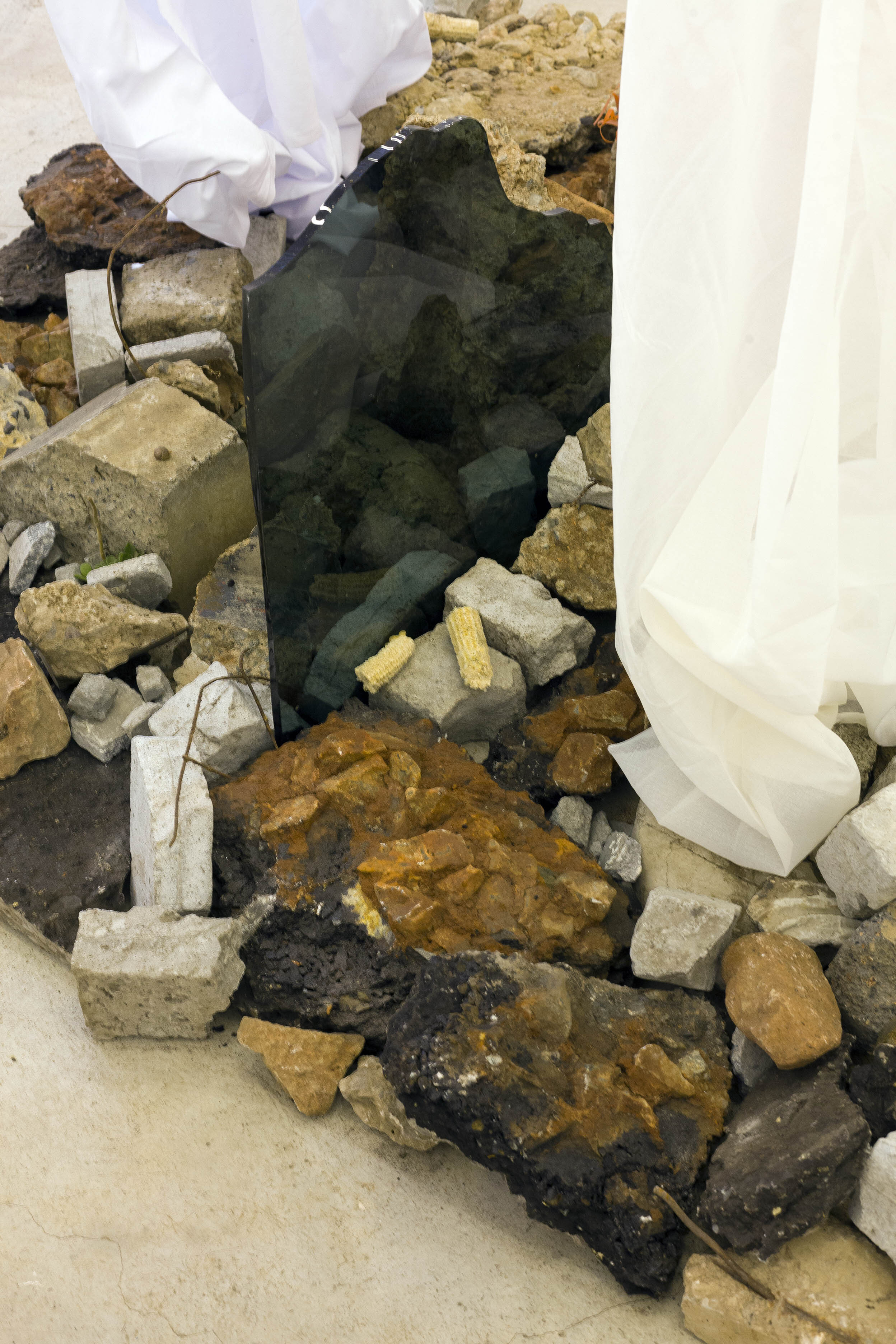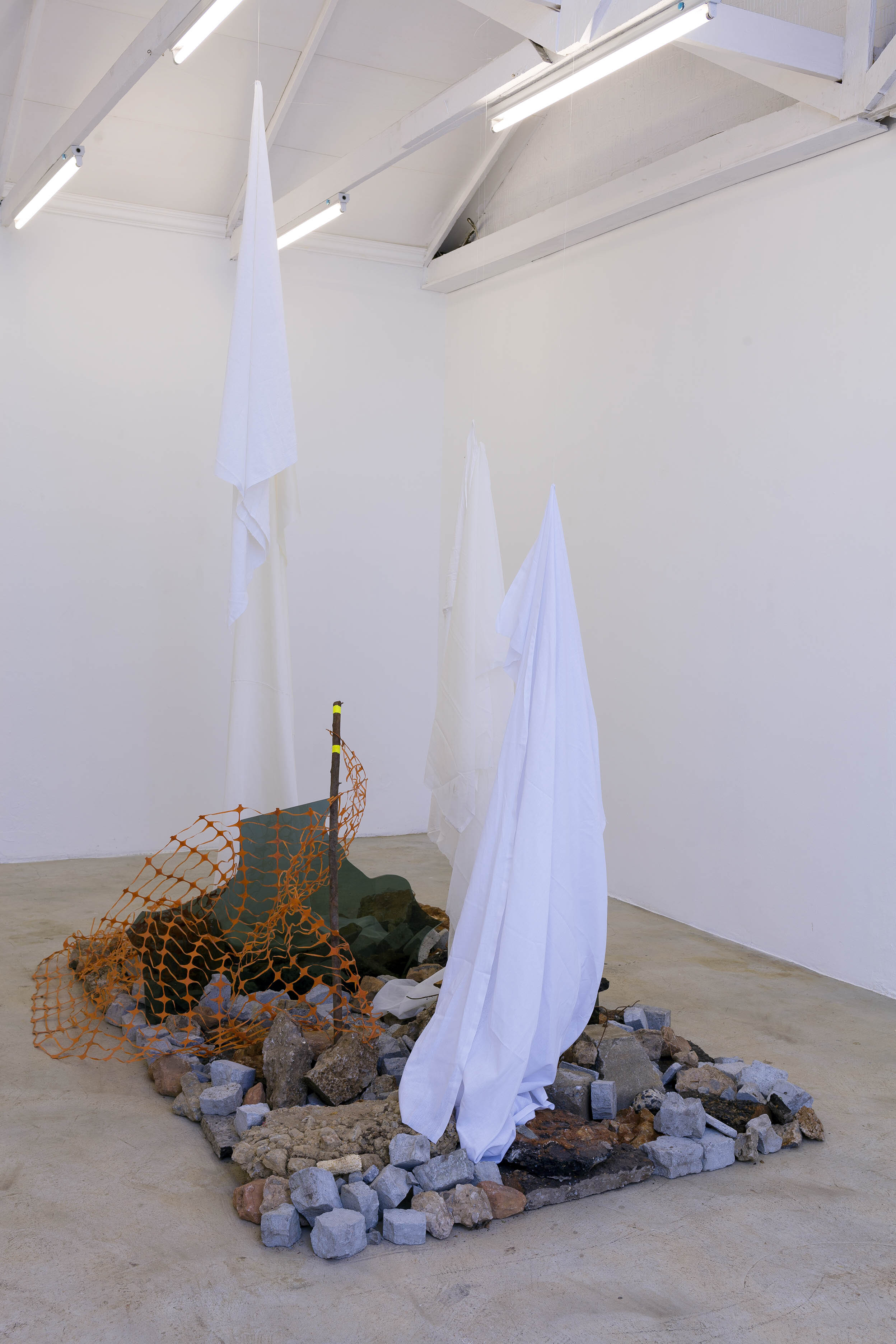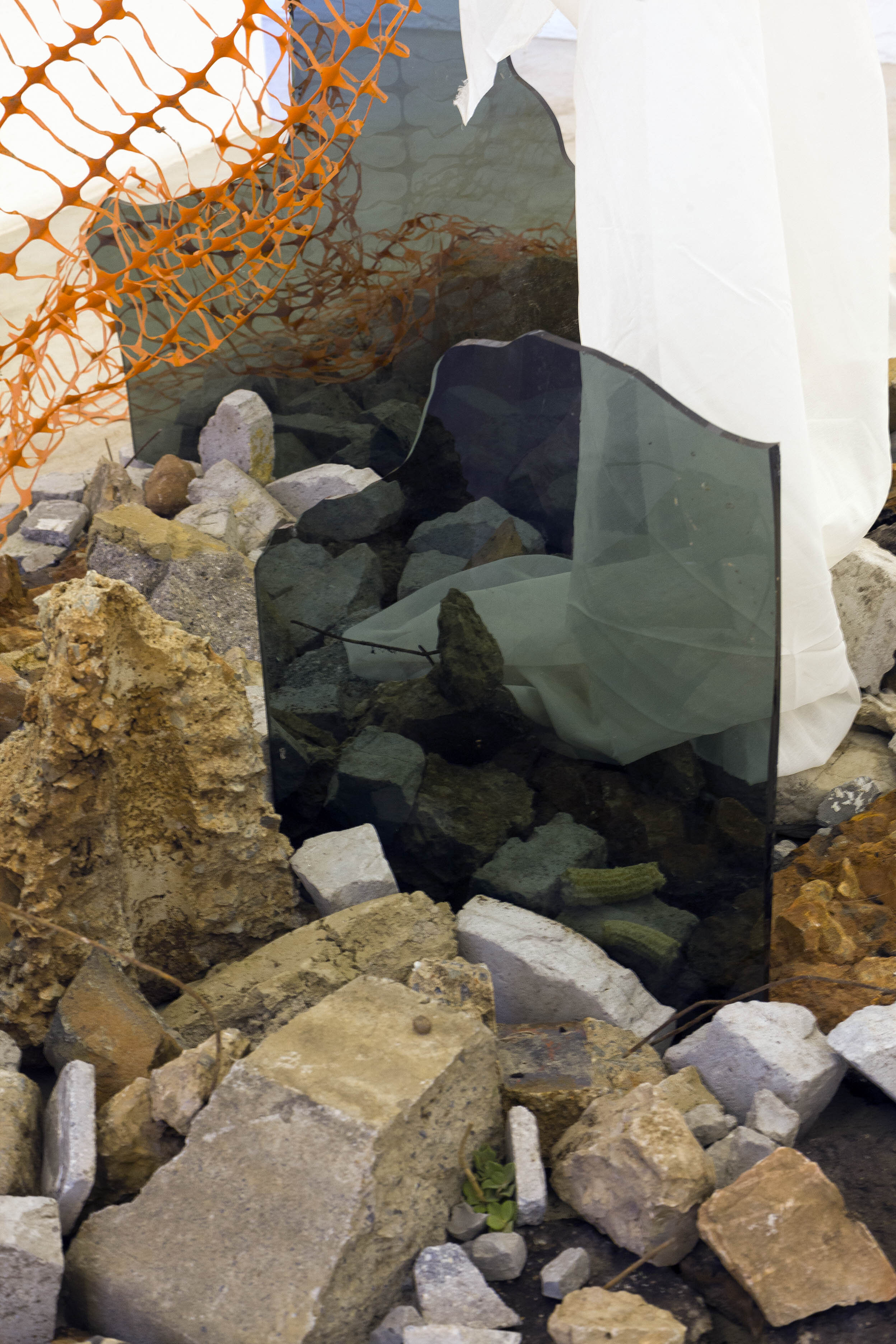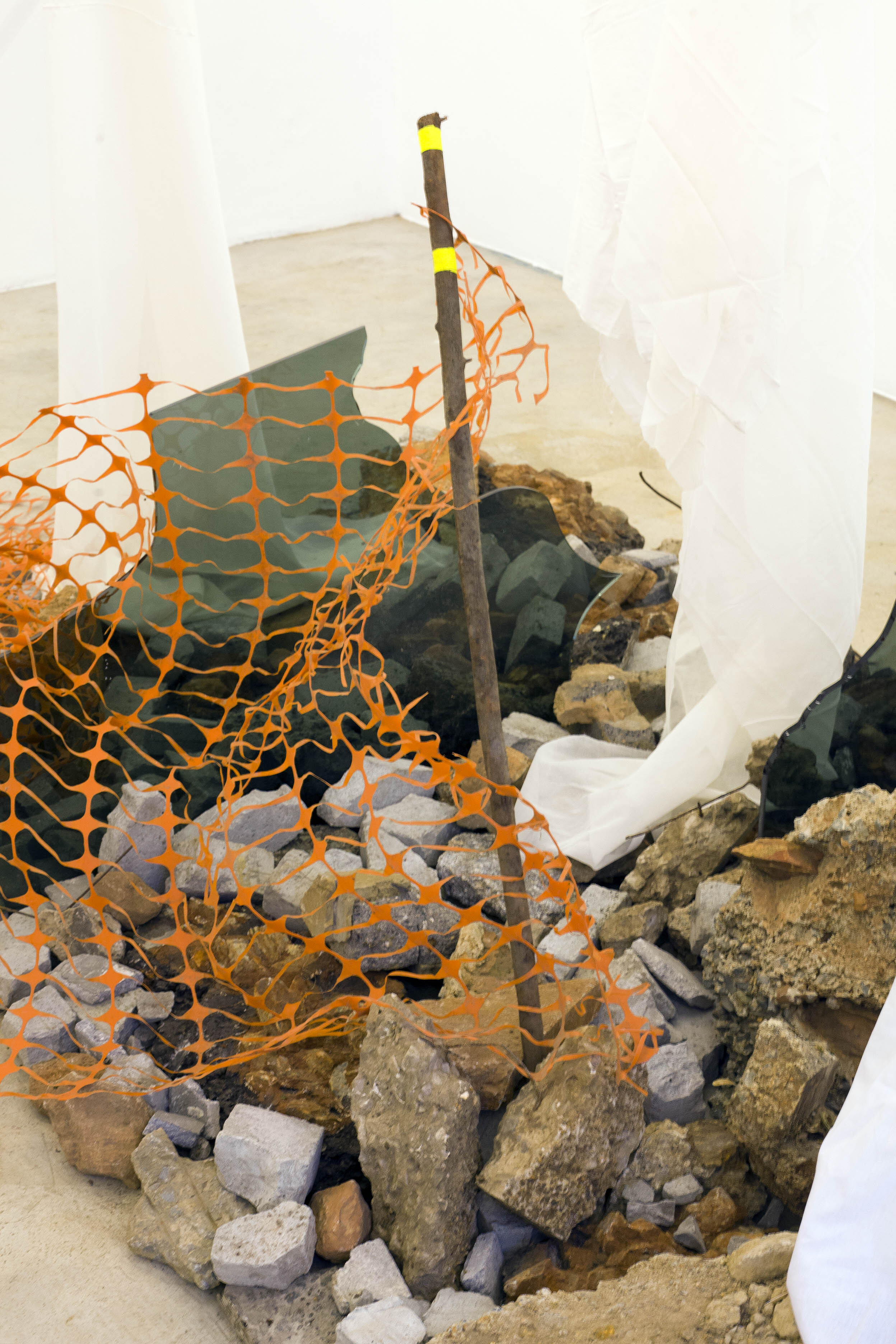Looking Forward while Looking Back:
A Wave of Happenings
Curated by Elisa Gutiérrez Eriksen
June 19 - July 10, 2020
The circumstances and events that have developed in the past weeks have brought feelings of despair, tension, anger, fear and frustration, only to name a few. In the middle of a series of protests the question of how we each fight for justice arises.
For this iteration of Looking Forward while Looking Back we have brought together the work of Freya Powell, Sophie Dupont and Io Makandal. Their works intersect as expressions of recognition of different contemporary tragedies (states of unease); as ways of confronting, challenging, dissenting and honoring what has been lost.
“Pervasive forms of inequality have established that some lives are disproportionately more livable and grievable than others” (1). In this context, Only Remains Remain, by Freya Powell, pays homage to the lives of unidentified migrants in mass graves by exploring the mournful potential of the human voice through pitch, intonation, breath, movement, and pause, invoking the silence of their burial and acknowledging our collective complicity and grief.
Sophie Dupont´s Body Full of Breath performance investigates what it means to be alive by fully filling her lungs and emptying them –evoking the cycle of life and death– at a time where the ability to breathe becomes an act of resistance that enables a voice, a movement, and a shared wind.
For Io Makandal, monuments reflect societies that are obsessed with a distorted idea of progress. They act as fictional spaces and places that illustrate an ambiguous relation between dreamed and created environments. In Life in the Entropics, Makandal rebuilds structures with detritus of the city of Johannesburg as material expressions of chaos and dis-order.
From material expressions of entropy, to the collective power of the voice when mourning, and asserting our equal state as human beings at the moment of existing, these works explore different ways in which, from the personal to the collective, we aim to recover our rights to mourn, to be named, to demand change, to re-build, to breathe.
(1) Judith Butler, The Force of Non-Violence
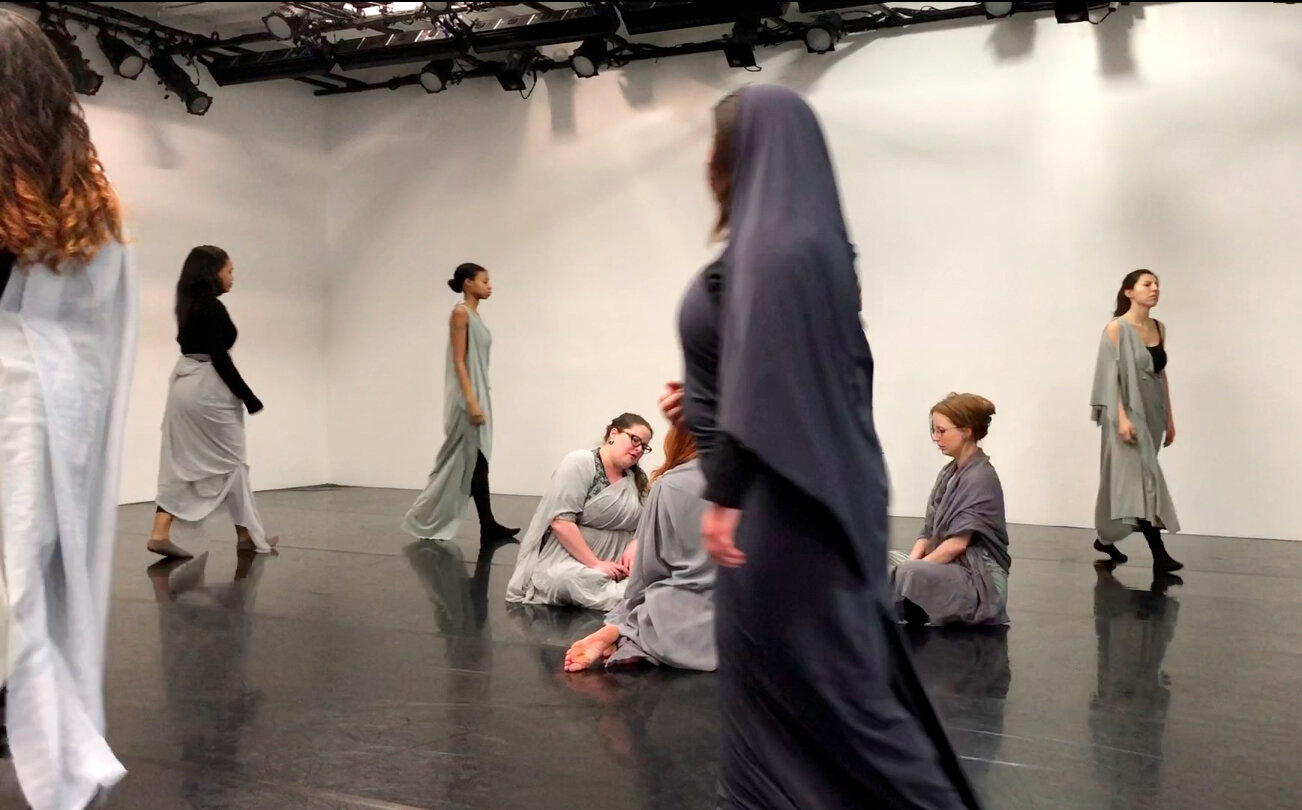
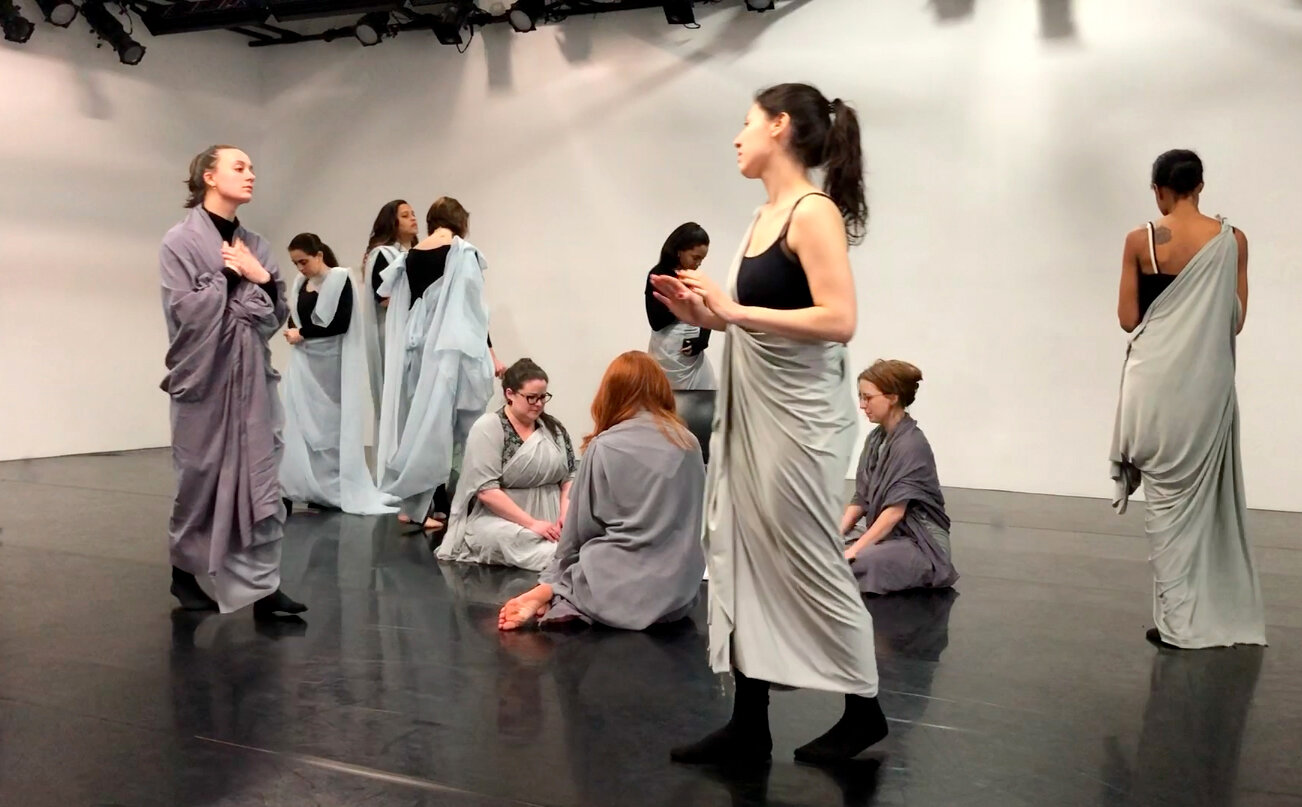
Freya Powell (USA)
NARS Alumni, 2018 Season I-II
@freyapowell7
Most recently I have been working on Only Remains Remain which is a 15-person performance that was going to be premiering at PS1 last month but was postponed due to the pandemic. Footage from a rehearsal at the Center for Performance Research edited with footage of a rehearsal via Zoom during the Covid-19 pandemic can be watched here.
Only Remains Remain, uses the structure of a Sophoclean chorus to create an elegy for the hundreds of unidentified migrants buried in mass graves in Sacred Heart Cemetery in Brooks County, Texas. Working with an ensemble of 15 performers, I have been exploring the mournful potential of the voice. Through a collaborative process, the work utilizes pitch, intonation, breath, movement, and silence to embody a contemporary tragedy drawn from the story of Antigone.
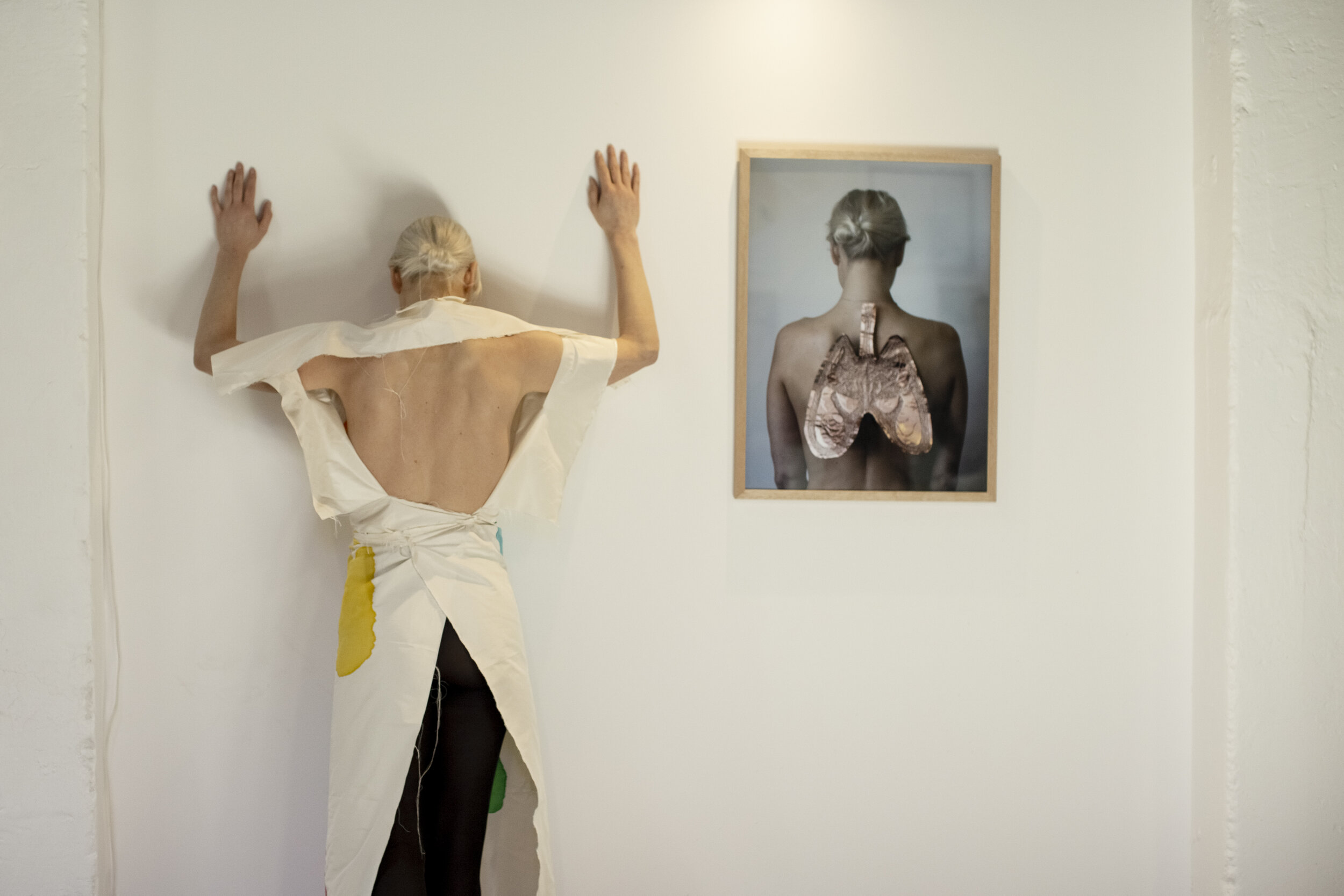
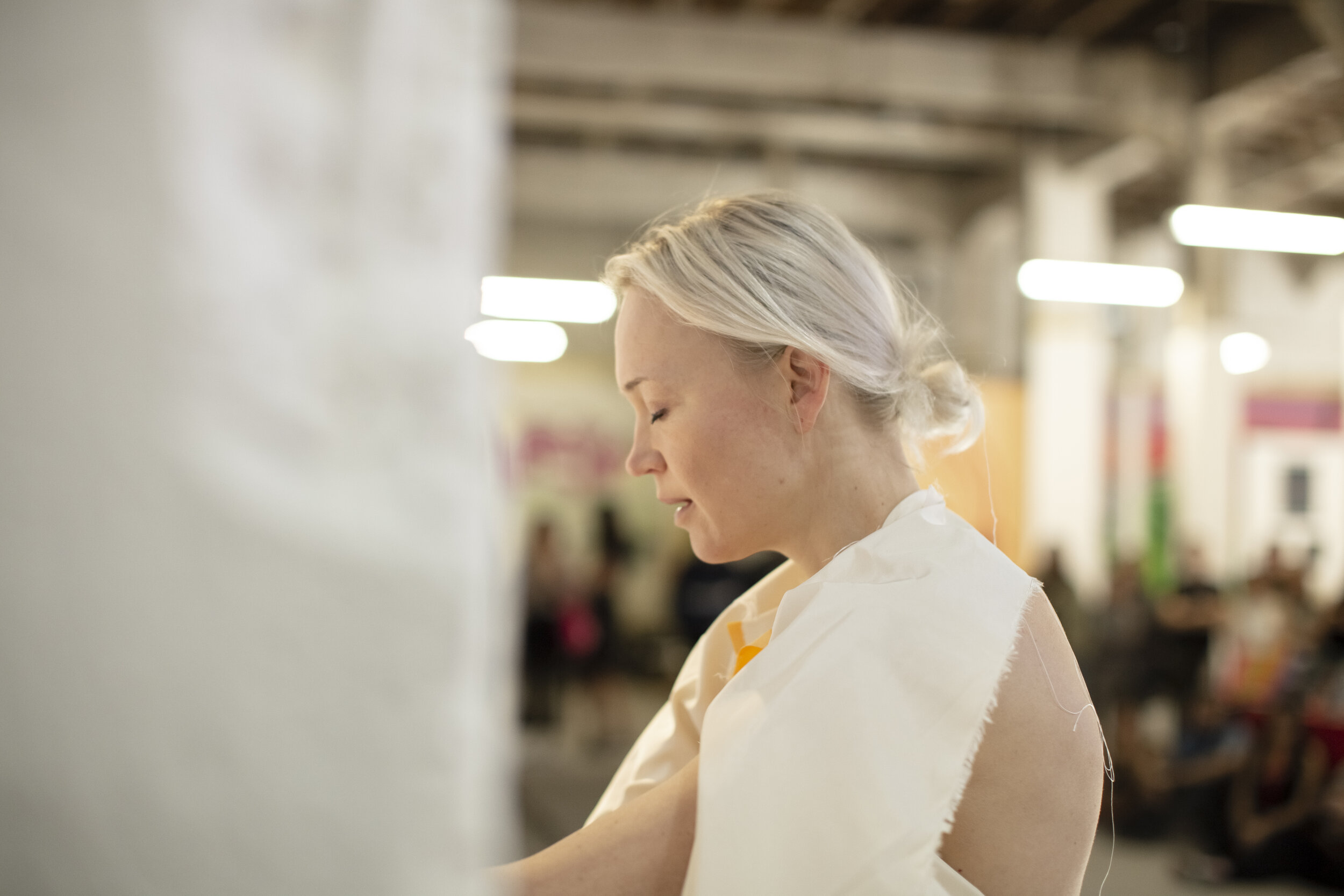
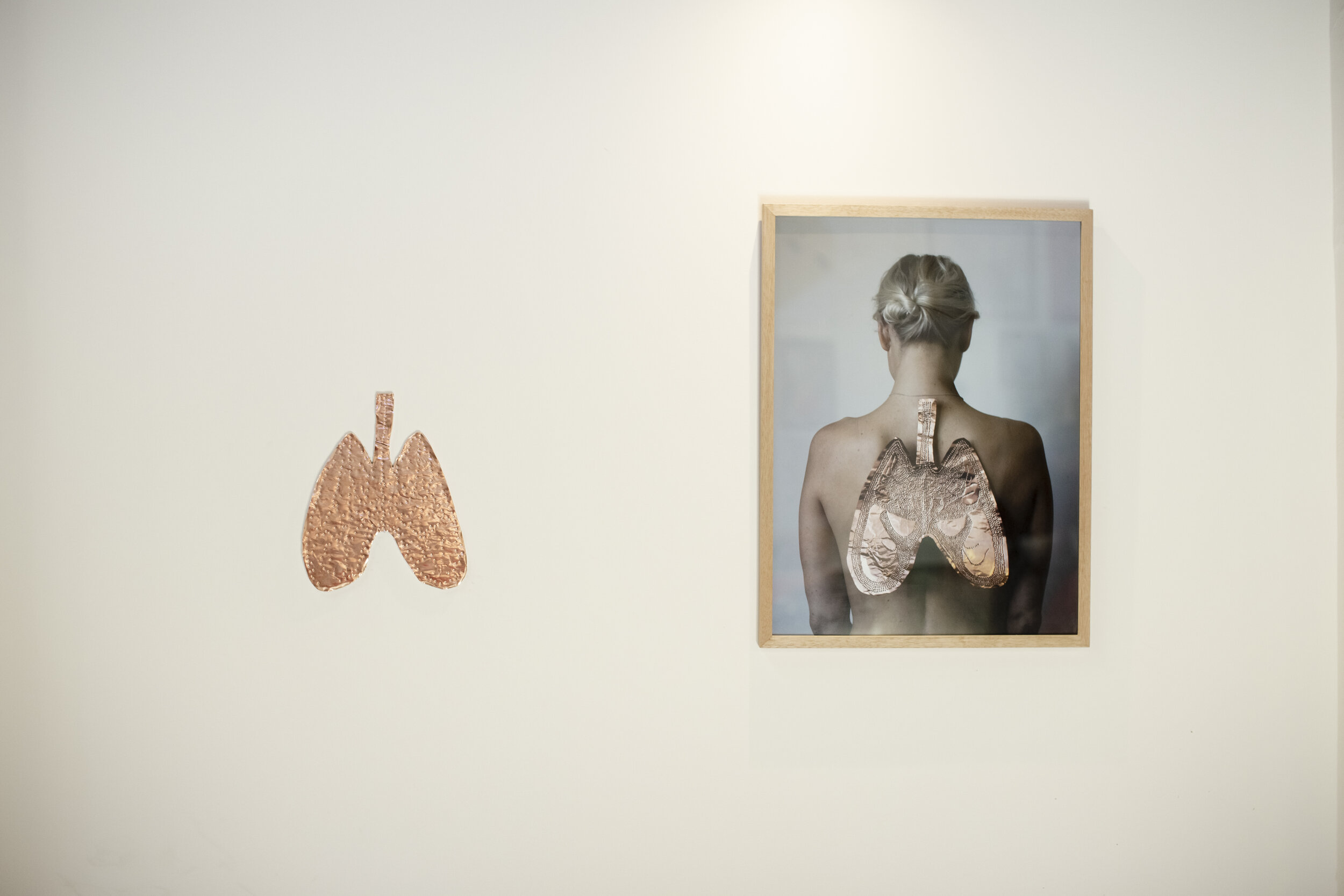
Sophie Dupont (Denmark)
NARS Alumni, 2019 Season IV
@sophie__dupont
The center of Body Full of Breath is one of the most basic mechanisms of the human body: Breathing.
A copper plate shaped like a lung is hung on a wall. For 60 minutes, the artist applies a small hole in the copper plate for each exhale she takes. Between the exhalations, she either stands still or breaks out, until her lungs are filled with air again and emptied, while a new hole is inserted in the copper plate.
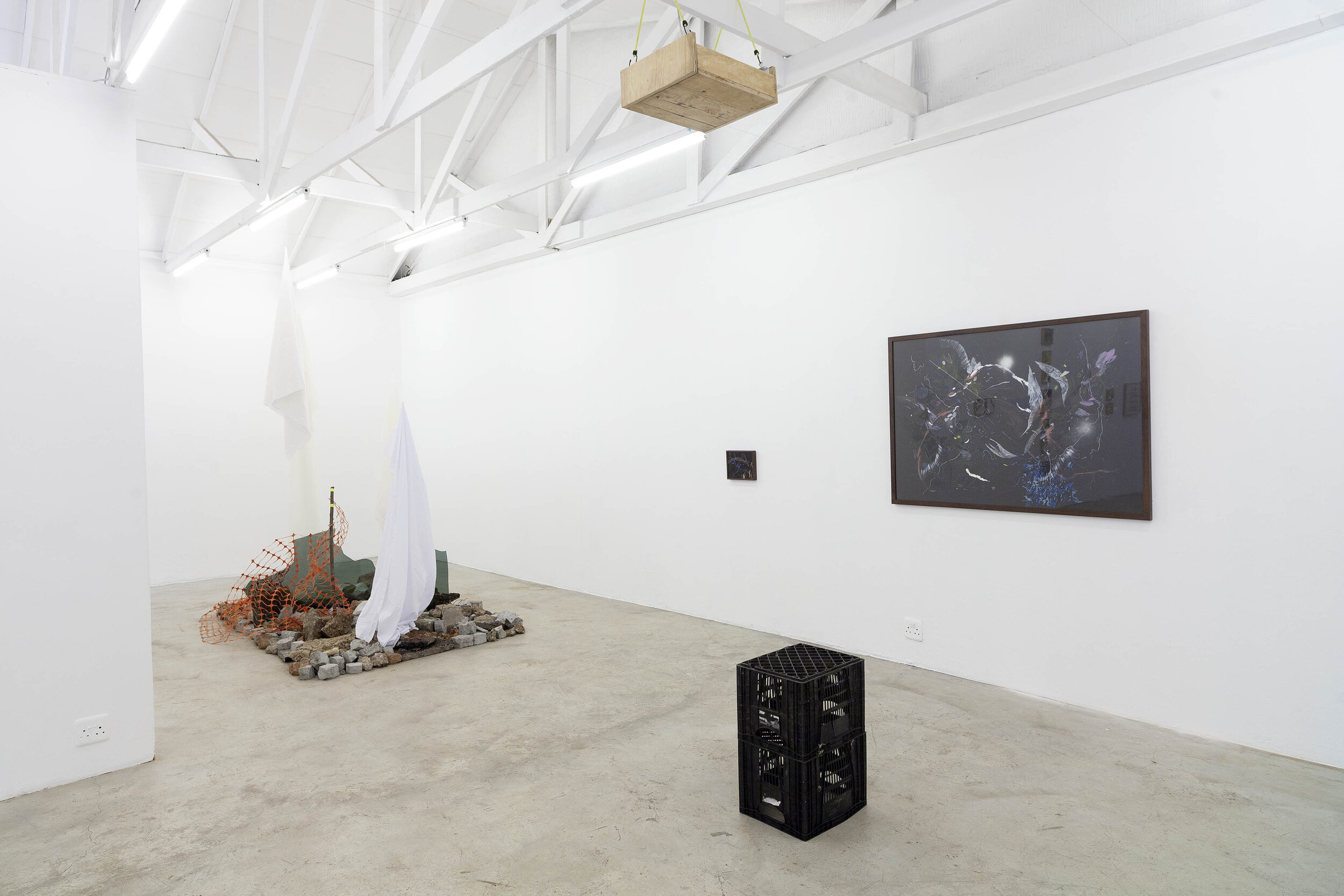
Io Makandal (South Africa)
NARS Alumni, 2016, Season III
@iomakandal
Life in the Entropics is an installation piece that formed part of Io Makandal’s solo show of the same name in July 2019 at the Kalashnikovv Gallery in Johannesburg. Comprised of a collection of urban detritus collected from the streets of Johannesburg, an African cosmopolitan city obsessed with its progress, Makandal reflects on its contradictions and the material expression of entropy in a time conditioned to ambiguity. Life in the Entropics presents an ephemeral monument to the Entropic; an (imagined) place in a time of uncertainty where dis-order and dis-ease is the mode of being while leaning into the trouble.
Download Press Release
CONVERSATIONS
Freya Powell
2018 Season I-II
@freyapowell7
Can you tell us a bit more about the process for creating the work presented in this exhibition?
Echoing the structure of a Sophoclean chorus I have been working with 15 female performers, 4 of which are singers, a production assistant, a costume designer, and a choral director. We started rehearsing and building the piece in December at the VW Dome at MoMA PS1 where I have been in residence. The singers, while working with Samuel Lang Budin, developed a framework within which to improvise each of their parts. I gave them emotive words to carry through their voices for different sections and they developed incredibly beautiful, haunting melodies to utter. Each performer has an action word that guides how they embody and deliver their lines, and they are grouped into sections that reflect the stasimons (choral sections) of Sophocles Antigone. It has been an intuitive process and I couldn’t imagine doing it with any other group – they have given so much to the piece.
How are you doing these days? Is your artwork being influenced by or providing an outlet from the current events in the world?
I haven’t really had the space, mentally or emotionally, to make work nor the time since the pandemic lockdown started.
Recently though I have been reading a lot. First fiction, Ocean
Vuong’s ‘On Life We Are Briefly Gorgeous’ has been a recent favourite, and now back to research materials. So, as the pandemic is lessening, I am slowly able to come back to my work.
How do you see the role of art and artists in society today?
I don’t know that our role has changed - we are here to bear witness to what has and is happening in the world. This of course looks different for everyone and the way in which we do this shifts constantly.
Is there something specific that you hope to explore in the future?
Right now, I am doing more research on the Greek goddess Athena for a project I have been working on for some years. In 2016, I started a series of videos that uncover the little-known story of an Athena test missile that was launched from a base in Utah and overshot its target landing in Northern Mexico, it was carrying two containers of cobalt-57, a radioactive element. I have completed all three videos which were shot in the Mapimi desert of Mexico, White Sands Missile Range in New Mexico, and Green River Launch Complex in Utah. Now, I am working on a text – chapbook that will have other elements of my research for the project.
Sophie Dupont
2019, Season IV
@sophie__dupont
Can you tell us a bit more about the process for creating the work presented in this exhibition?
Body Full of Breath is a work inspired from another work of mine Marking Breath. In both works the breath and the notation of each breath is the centre of the work. Marking Breath always has a timeframe from sunrise to sunset whereas Body Full of Breath is one hour. In the work for Nars I was seated on a pedestal – the body as our manifestation of being and the breath that unites all of us and is our vital life source, I marked each exhalation into a lung shape in copper.
How are you doing these days? Is your artwork being influenced by or providing an outlet from the current events in the world?
My art is from lived life so yes – my work is relating to the situation now – but also, I have been working with breathing as the centre of my work for 10 years. So more than saying the current situation has influenced I rather say my work has now gotten another aspect to it – it’s even more significant now how the breath unites us – how we breathe the same air – the reason we at this time has to keep distance to be close and show love and respect.
How do you see the role of art and artists in society today?
Today most we do is very framed; work, family, spare time, etc – very rarely we have time and space to be bored – or to just be – without some kind of doing. I see art as this space – a
possibility space and time to reflect about life and being – to do nothing specific. To ask ourselves questions and find this resonance for our mind to rest, to go deeper, to flow freely. And in this, question society – the world – to reflect in unstructured manners maybe – and to find our own voice in all the noise that surround us.
Is there something specific that you hope to explore in the future?
I’d like to find ways of working with breath and breathing even more. To integrate the invisible into visible and cultivate the breathing even more. Breathing is our first and most important source of energy and for me my main source of inspiration – before anything else – we are alive and breathe.
At the moment I’m showing new paintings that I began at Nars (attaching the white monochromes) Spatula Breath Paintings. Abstract paintings where time and breath are part of the process. The time and number of breaths in connection with the number of spatulas used in the making of the work are noted as part of the painting. Like the body, they have a central axis and are almost symmetrical. They are a form of abstract self-registration of consciousness of being body and mind – a pure consciousness that sees itself both inside and out translated in abstract form that relates to a minimalist conceptual tradition where material and method have significant significance.
Io Makandal
2016, Season III
@iomakandal
Can you tell us a bit more about the process for creating the work presented in this exhibition?
Life in the Entropics is a continuation of a long and slow process of observing, collecting, mediating and thinking through the matter. The concrete detritus had been collected over a number of years and is mostly the discarded residue of progress or refinement in the city. A material such as concrete, celebrated for its longevity, sturdiness, endurance, is presented vulnerable, broken, disintegrating and in the process of entropy. I begin with thinking about the idea of entropy, ecologies and materiality through the matter I have collected and arrive at a constellation or configuration that proposes a certain method of meaning making – an ephemeral monument, an oxymoron in terms.
How are you doing these days? Is your artwork being influenced by or providing an outlet from the current events in the world?
I feel like my art practice is being affirmed by the condition of the current events globally. A pandemic and economic collapse is a part of the ecology of environmental shift.
How do you see the role of art and artists in society today?
The role and function of art and artists has not changed fundamentally in society today, if the question is insinuating that something must have shifted with the event of Covid-19. Art and artists will always perform the vital role of cultural, political, ecological, agricultural, societal, public and private mirror. We are perhaps, in this moment today, called upon to be more acute and emphatic in our reflection.
Is there something specific that you hope to explore in the future?
I’m curious to expand my focus by exploring more living and decaying material and finding ways to incorporate these processes into my practice.

